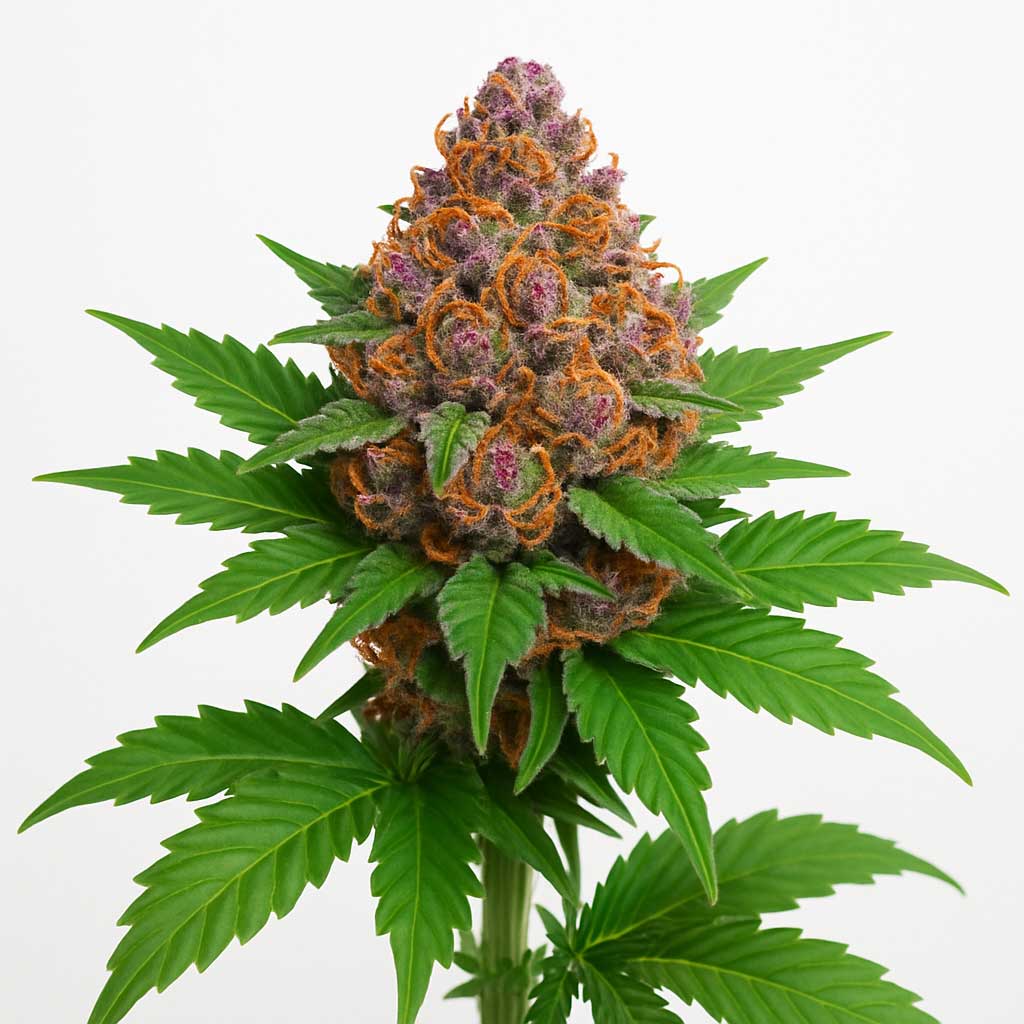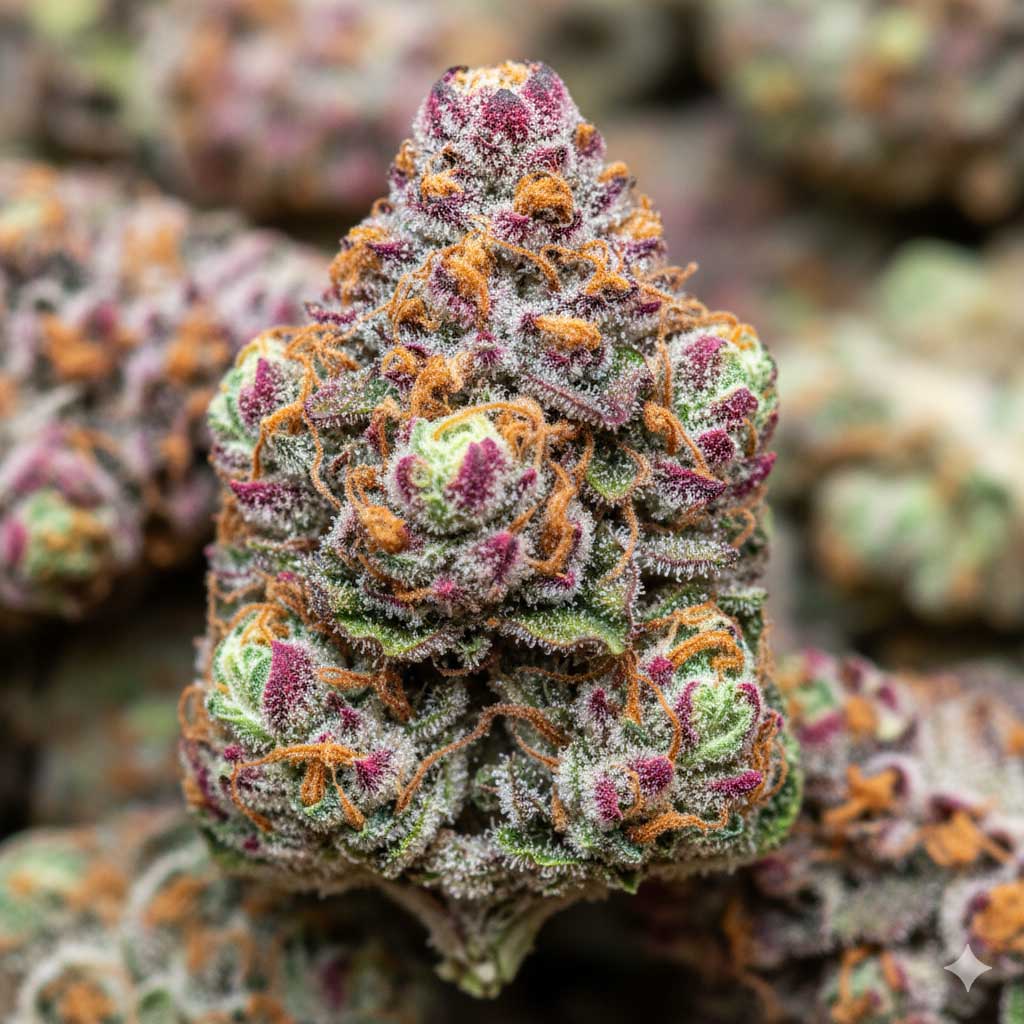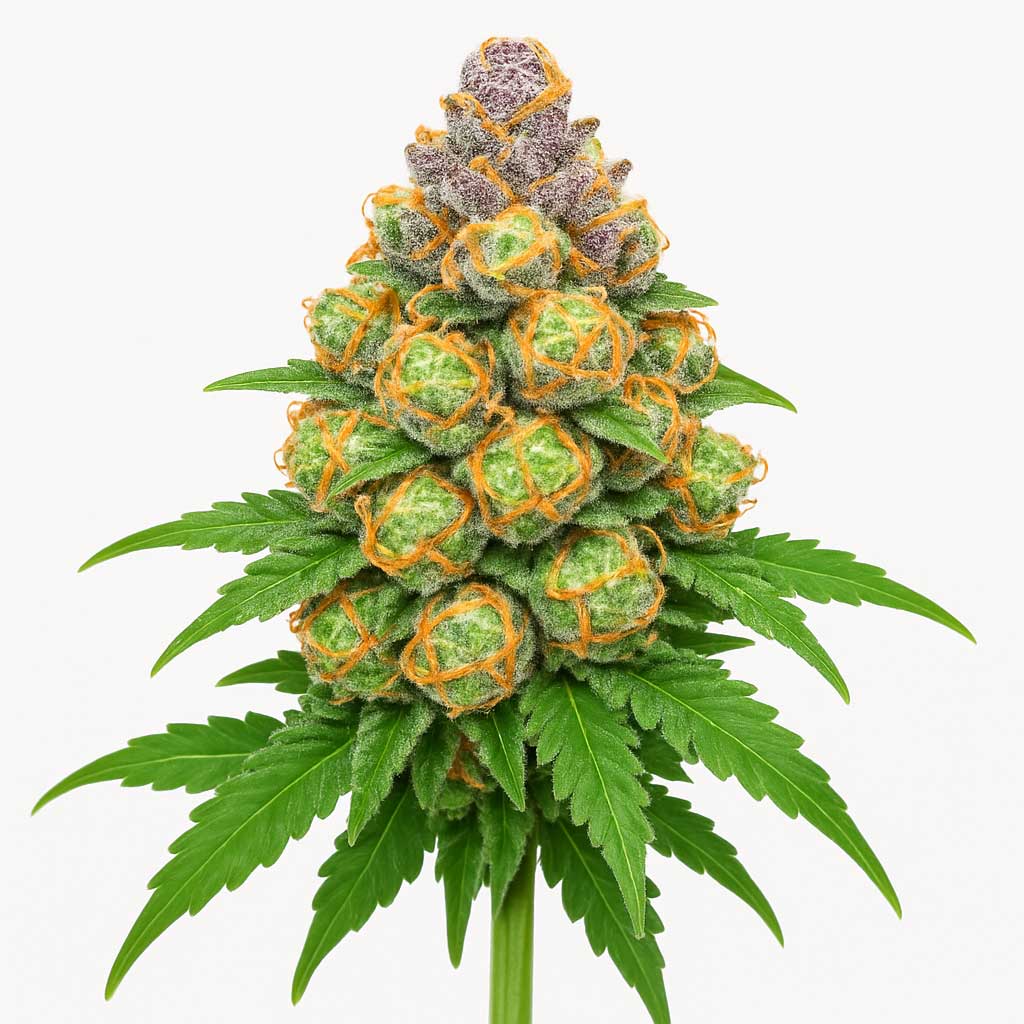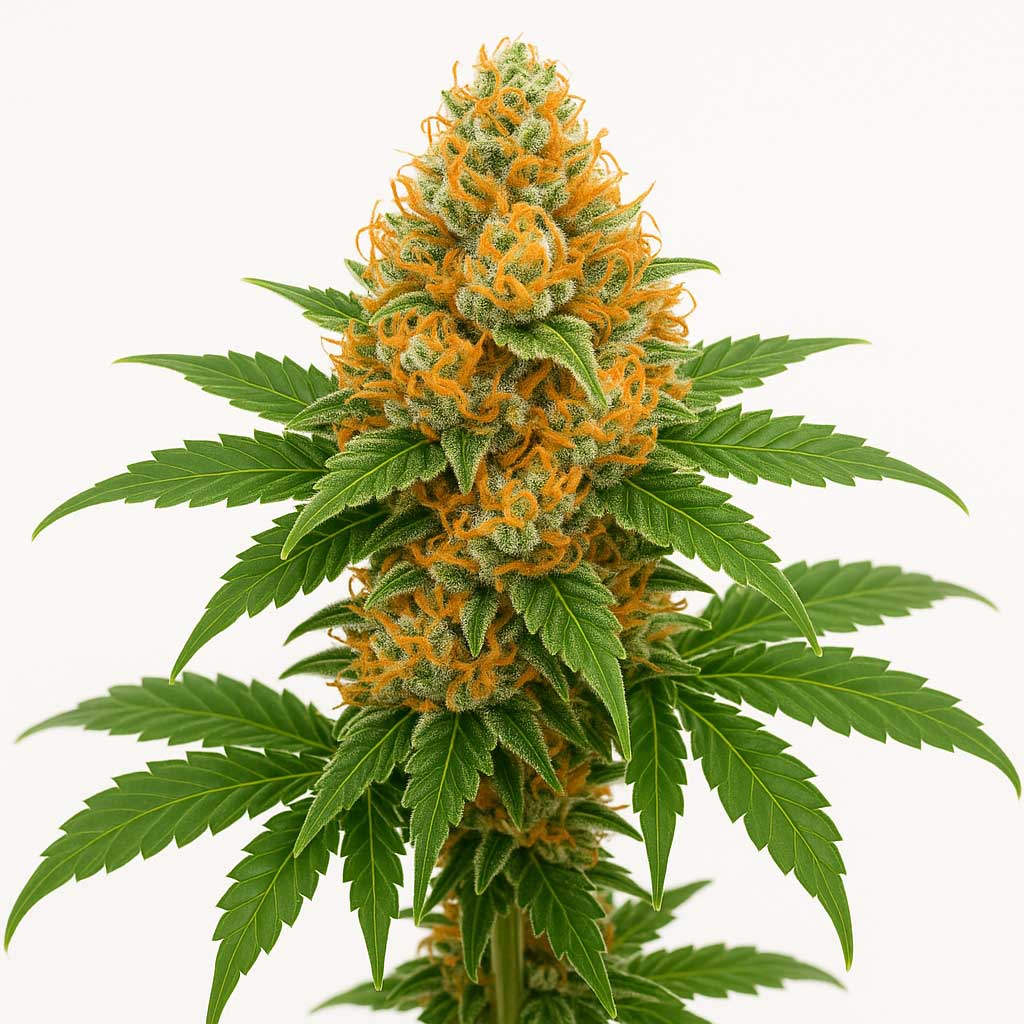Tropicana Cherry (Cannabis Strain) — Strainpedia
Tropicana Cherry, also known as Trop Cherry, is a sought-after Hybrid cultivar derived from a cross of Tropicana Cookies x Cherry Cookies. Recognized for its explosive fruity, citrus-forward aroma and striking purple-hued buds, it is frequently referenced in horticultural education for its high terpene concentration and versatile, uplifting effects. The information below is intended strictly for scientific and botanical reference.
Quick Facts
| Genetics | Tropicana Cookies x Cherry Cookies |
|---|---|
| Variety | Sativa-Dominant Hybrid (approx. 60% Sativa / 40% Indica) |
| Flowering Time | 8–10 weeks (60–70 days indoors) |
| Yield Potential | 500–650 g/m² (High) |
| Plant Height | 100–140 cm; moderate stretch; strong vertical growth |
| Climate Preference | Warm, Controlled Indoor (Stable humidity is crucial for dense buds) |
| Difficulty | Intermediate (Requires effective training and odor control) |
Scientific & Botanical Overview
Tropicana Cherry plants exhibit vigorous growth and substantial vertical stretch during the early flowering phase. The mature buds are extremely dense and chunky, often displaying deep purple, blue, and rich green coloration due to high anthocyanin expression, particularly when exposed to cooler nighttime temperatures. The flowers are coated in a thick, frosty layer of resinous trichomes, making this cultivar highly prized for both flower and concentrate production. The flowering window typically ranges from 8 to 10 weeks, with a strong, complex aromatic output.
Effects & Use-Cases (Reported)
- Commonly reported effects: intensely euphoric, creative, focused, and energetic, followed by a light, non-sedating body calm.
- Use-case context: ideal for daytime and early afternoon consumption, creative projects, social gatherings, and tasks requiring sustained focus and motivation.
- Note: These are observational reports, not medical claims; outcomes are not guaranteed.
Aroma & Flavors
- Aroma: a loud, complex blend of sweet, tart cherry and pungent, zesty citrus (tangerine/orange), with a creamy, subtly earthy, and spicy undertone.
- Flavor: a burst of sour candy, sweet ripe cherry, and tangy orange zest on the inhale, leaving a refreshing, slightly earthy spice on the exhale.
- Terpene associations: limonene, caryophyllene, myrcene, linalool.
Tested Cannabinoid & Terpene Ranges
| Compound | Typical Range* | Notes |
|---|---|---|
| Δ⁹-THC | ~18–24% (reported up to 32%+) | High potency; suitable for intermediate to experienced users. |
| CBD | ~0–1% | Trace amounts are generally present. |
| Limonene | ~0.8–1.2% | Dominant terpene; responsible for the bright citrus and mood-elevating reports. |
| Caryophyllene | ~0.5–0.8% | Contributes spicy, peppery notes and adds depth to the overall profile. |
| Myrcene | ~0.4–0.6% | Earthy, herbal undertone; contributes to the balancing body relaxation. |
| Linalool | ~0.2–0.4% | Subtle floral notes; associated with calming effects. |
*Ranges are literature- and lab-report-informed references and can differ with environment, harvest timing, post-harvest handling, and analytical methods.
Cultivation Notes
- Light Cycle: 18/6 vegetative; 12/12 flowering
- Humidity Targets: 40–50% during early flower; 30–40% during late flower; excellent air movement is mandatory due to dense bud structure.
- Nutrition: Moderate to heavy feeder; requires robust and stable nutrient delivery, with careful monitoring for calcium/magnesium needs under high-intensity lighting.
- Training: Topping, LST (Low-Stress Training), and SCROG are highly recommended to control height and maximize lateral growth and yield.
- Harvest Window: Late September to mid-October outdoors (Northern Hemisphere), benefiting from cooler temperatures to fully express purple coloration.
Grower Notes (Week-by-Week Snapshot)
- Weeks 1–3 (Transition/Stretch): significant stretch; aggressive training and canopy management (trellising/scrog) are necessary to control height.
- Weeks 4–6: dense flower set; perform final defoliation pass; ensure P/K levels are elevated to support bulking; monitor for fungal issues.
- Weeks 7–8: peak resin and biomass accumulation; deep purple colors intensify; add structural support to heavy branches.
- Weeks 9–10: ripening; initiate flush; harvest based on trichome maturity (milky/slight amber); focus on slow, controlled drying.
- Post-Harvest: dry 18–20 °C, 55–60% RH.
Timelines shift with genotype and environment; prioritize plant health markers and trichome maturity over calendar counts.
Genetic Lineage
Tropicana Cherry was bred by Relentless Genetics and is the result of crossing the uplifting, citrus-forward Tropicana Cookies with the potent, sweet Cherry Cookies. This lineage was specifically designed to blend exceptional flavor and aroma (terpene content) with high potency and a functional, balanced hybrid effect, making it a standout modern cultivar that has won several awards, including the Michigan Cannabis Cup.
Research Insights
The high concentration of limonene in Tropicana Cherry is a key focus in research regarding functional cannabis use, as this terpene is frequently associated with mood elevation and anti-anxiety properties that temper the high THC content. The presence of caryophyllene adds a balancing, anti-inflammatory potential, contributing to the strain’s reputation for providing an energetic yet composed experience (the entourage effect).
Frequently Asked Questions
Is Tropicana Cherry an Indica or Sativa?
Tropicana Cherry is classified as a Sativa-Dominant Hybrid (approximately 60% Sativa / 40% Indica), known for its uplifting, creative, and focused effects.
What does Tropicana Cherry smell and taste like?
It has an intense, pungent aroma of sweet cherry, sour orange, and tropical citrus. The flavor mirrors this with tangy cherry, orange zest, and a subtle creamy, spicy finish.
What are the typical effects?
Reported effects are intensely euphoric, creative, and clear-headed, making it a highly productive and uplifting experience.
How long does Tropicana Cherry take to flower?
Tropicana Cherry typically flowers in 8–10 weeks (60–70 days) indoors.
Is it suitable for beginners?
Tropicana Cherry is considered Intermediate in difficulty. While vigorous, it requires specific training methods to manage height and careful humidity control due to its dense buds.
Educational Disclaimer: This page is provided for scientific and horticultural reference only and does not constitute medical or promotional advice. Cannabis cultivation, possession, and use are regulated by local laws. Always comply with applicable legislation in your region.








